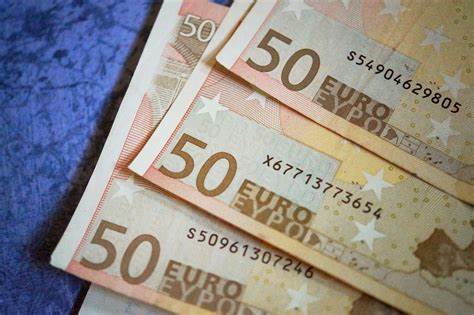The euro and German stocks rose on Monday as investors reacted positively to Germany’s election result, which positioned centrist parties to form a coalition. However, optimism was tempered by the potential challenges in negotiating economic policy.
European shares increased slightly, and Wall Street futures also gained after a significant sell-off in the U.S. on Friday.
Friedrich Merz is poised to become Germany’s next chancellor after his opposition conservatives won the national election on Sunday. He should be able to establish a so-called grand coalition with the ruling center-left Social Democrats, despite their drop to third place behind the far-right Alternative for Germany.
“In the end (it was) a result that was close to the latest exit polls and should be a very market-friendly outcome,” said Peter Schaffrik, global macro strategist at RBC Capital Markets.
The euro reached a one-month high of $1.0528 before dipping slightly, last trading 0.22% higher at $1.0481.
“While Merz seems determined to ease off the so-called debt brake, which limits annual borrowing to 0.35% of GDP, it won’t be straightforward,” noted Susannah Streeter, head of money and markets at Hargreaves Lansdown. “He will need a two-third majority in parliament.”
Meanwhile, Germany’s DAX stock index rose 0.73% in early trading. The pan-European STOXX 600 index increased by 0.19%, although tech stocks experienced a downturn.
German coalition talks are set to begin as EU leaders prepare for an extraordinary summit on March 6 to discuss additional support for Ukraine and funding for European defense needs.
This week marks three years since Russia’s full-scale invasion of Ukraine.
WALL STREET STABILIZES
S&P 500 futures and Nasdaq futures both rose by 0.6%. The Nasdaq suffered a 2.5% decline last week, marking its worst week in three months, with losses primarily driven by the “Magnificent Seven” tech firms.
Wall Street faced a setback on Friday when a survey on services revealed a surprising drop in activity, raising concerns about tariffs and cost pressures.
That pullback heightened expectations for Nvidia’s results on Wednesday, where investors anticipate fourth-quarter sales around $38.5 billion and first-quarter guidance of approximately $42.5 billion from the chip-making company.
The Federal Reserve’s preferred measure of core inflation is set to be released on Friday and is expected to show a slowdown to 2.6% from 2.8%. However, this could be overshadowed by concerns over tariffs.
A survey released on Friday indicated that U.S. consumers expect inflation over the next five years to reach 3.5%, the highest level since 1995.
“There are many irons in the fire, and markets don’t have the privilege of looking much beyond daily developments,” stated Francesco Pesole, currency strategist at ING.
The dollar index, which tracks the currency against six peers, was slightly lower at 106.48.
The U.S. currency rose 0.17% against the yen to 149.54, recovering after a decline last week due to rising expectations of further rate hikes from the Bank of Japan.
In commodity markets, gold remained well-supported at $2,946 an ounce, having risen for eight consecutive weeks.
In contrast, oil prices have been declining, partly due to speculation that a potential peace deal regarding Ukraine could lead to eased sanctions on Russia, thereby boosting its oil exports.
Brent crude was flat at $74.37 a barrel, continuing to trade around its lowest level since late December.
Click here for more news on Finance and Investing.


